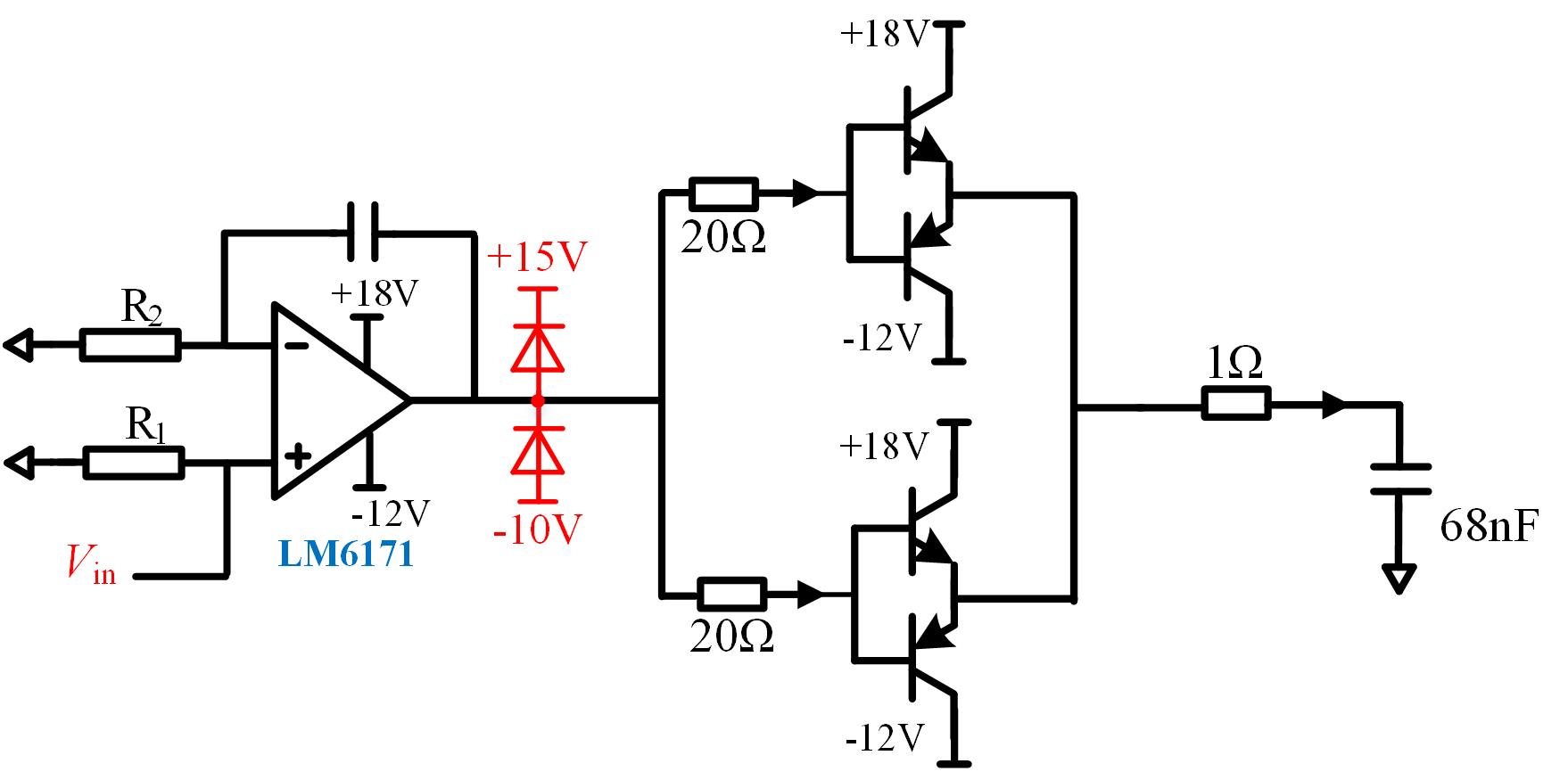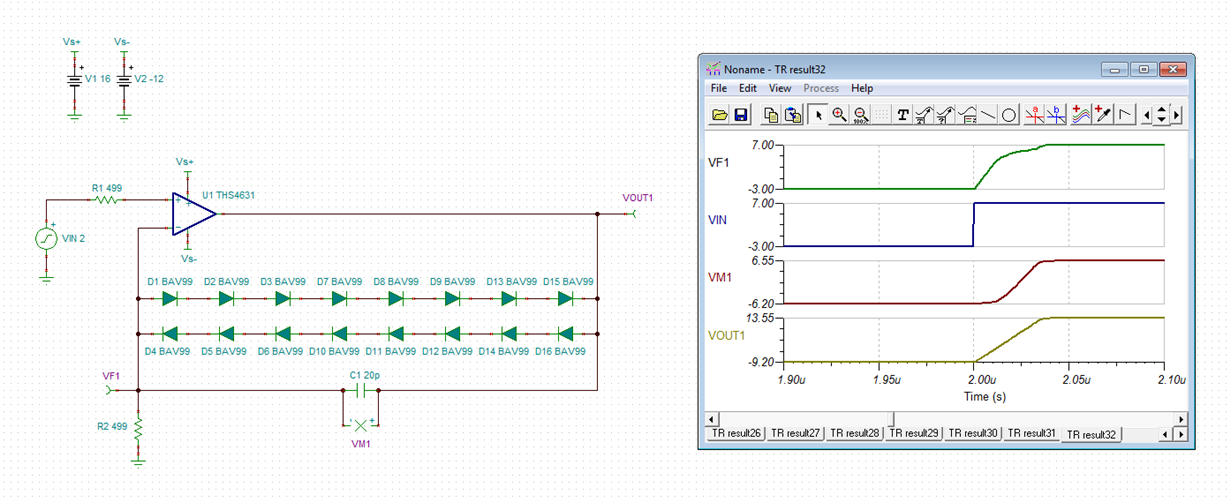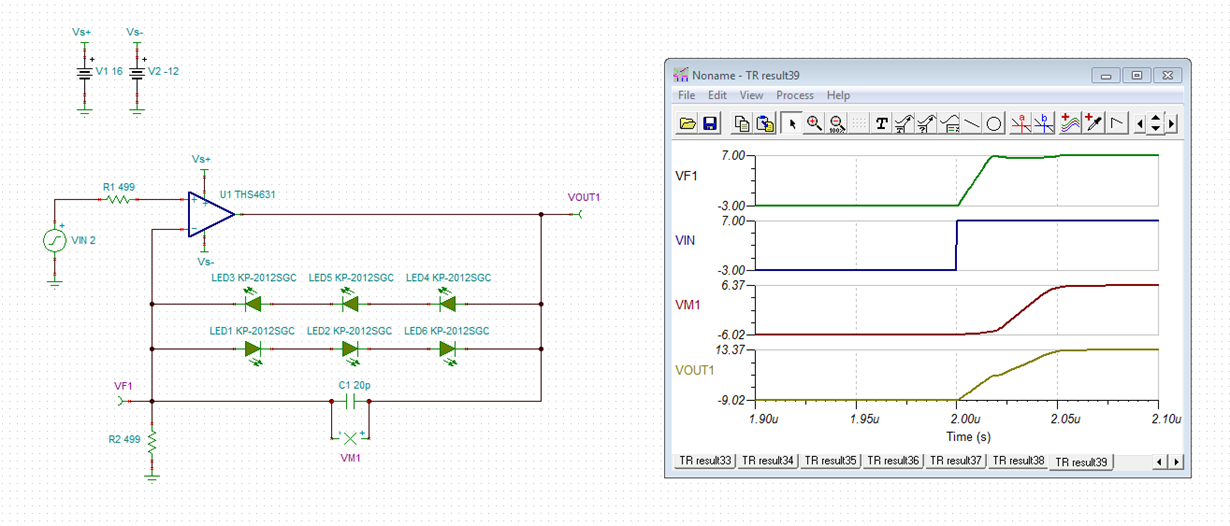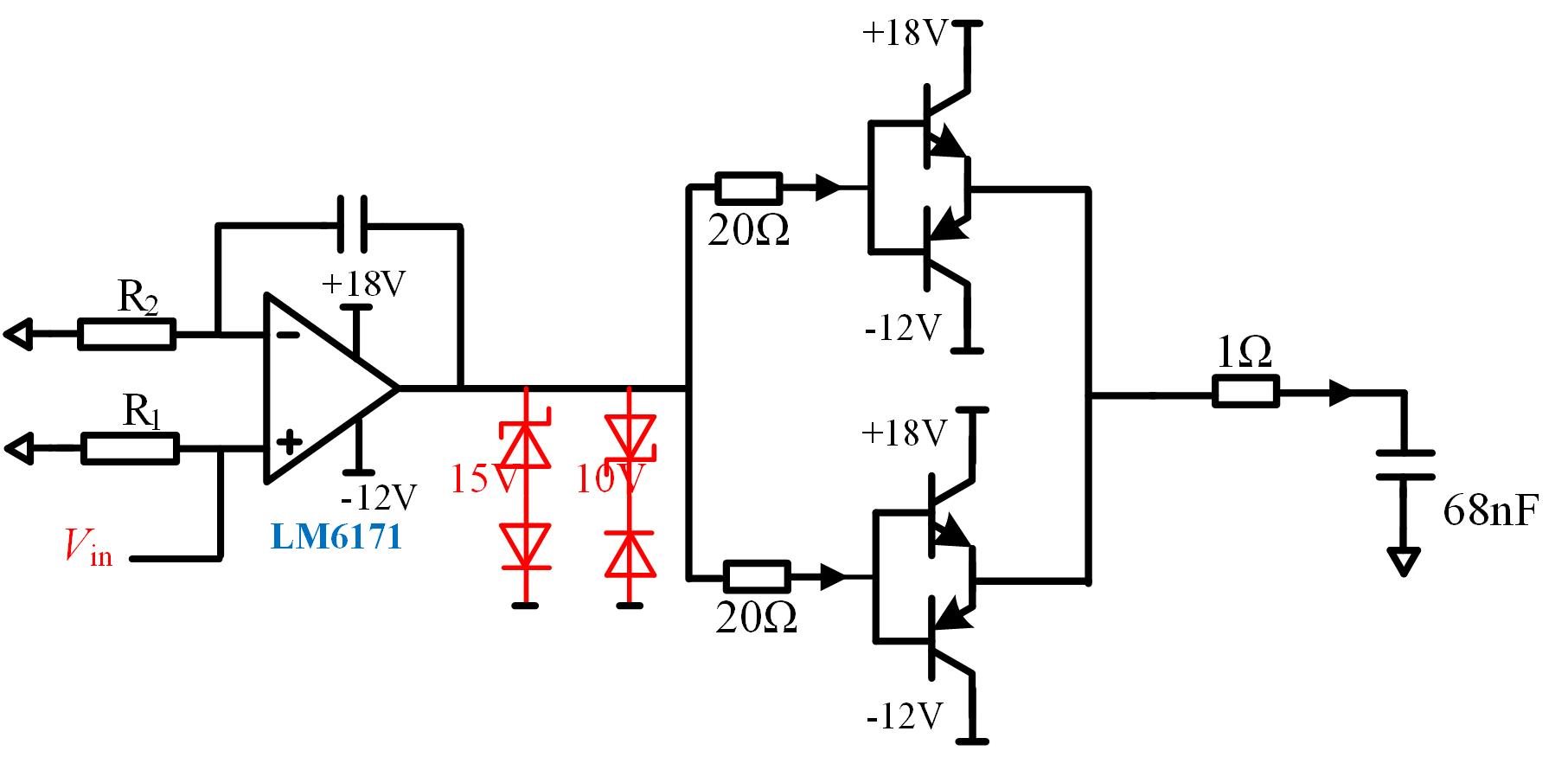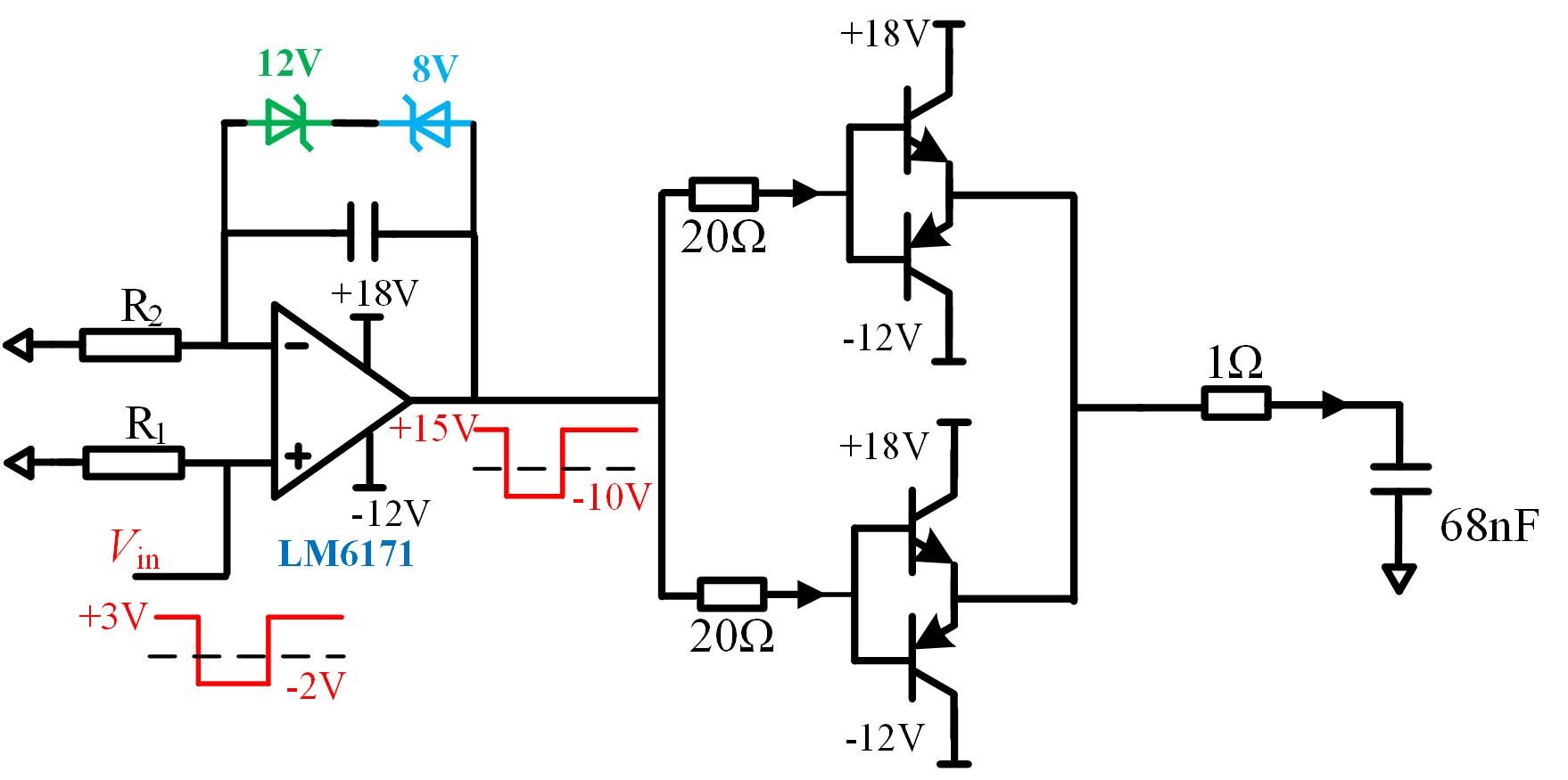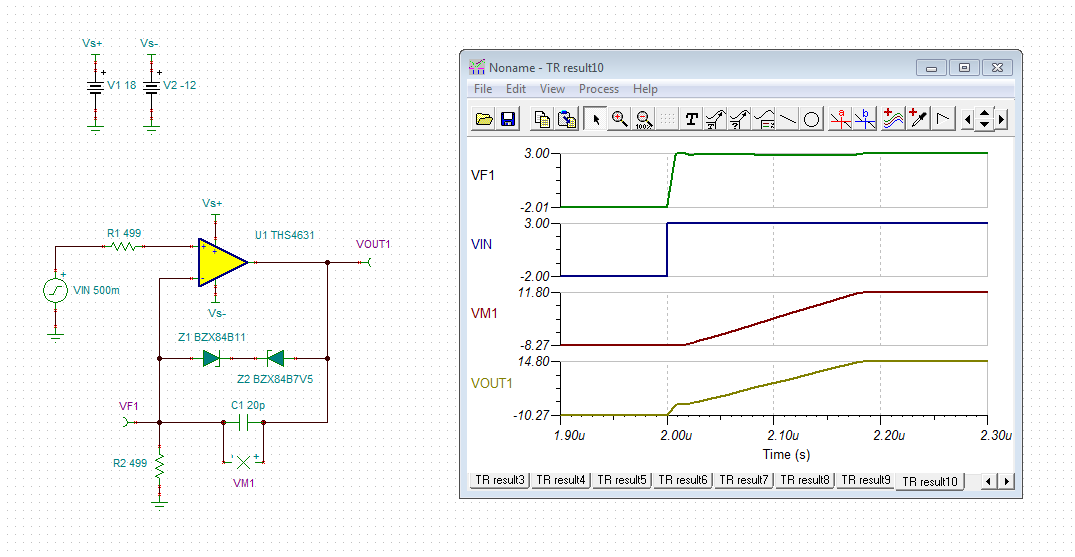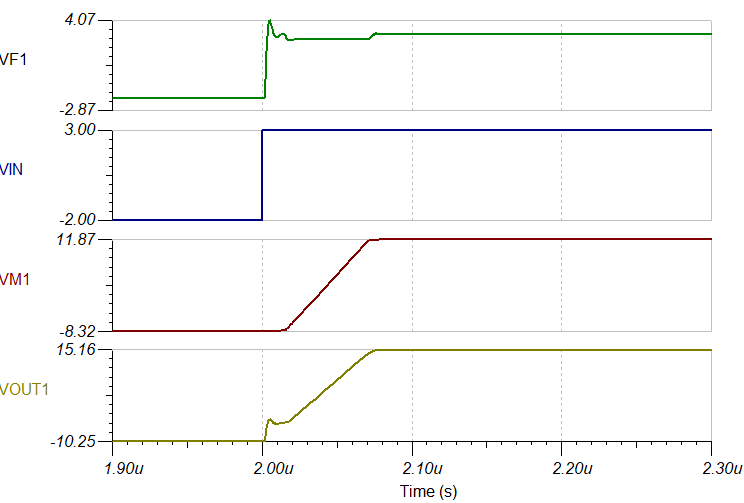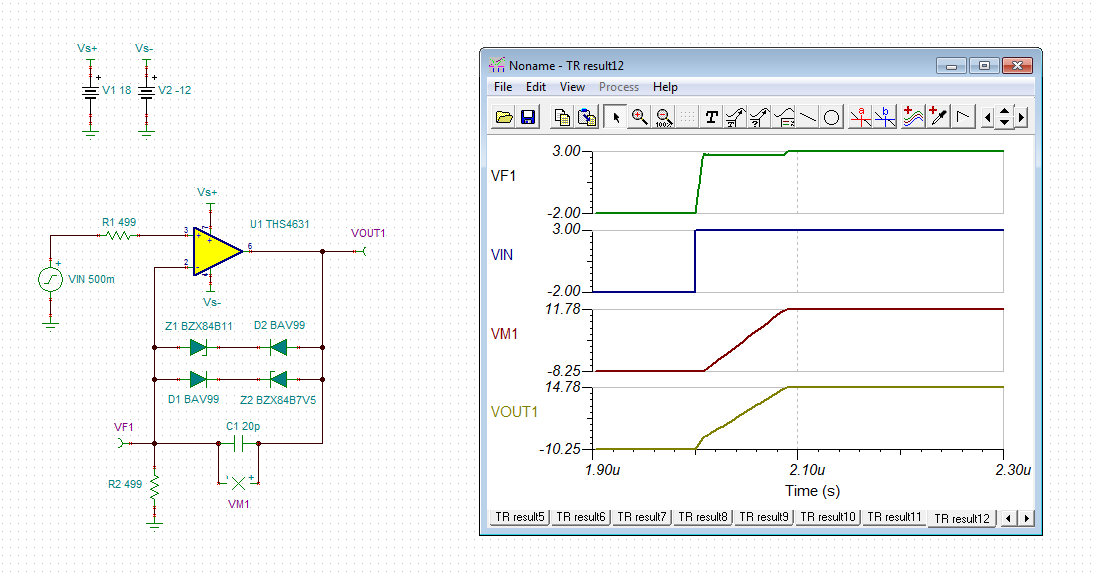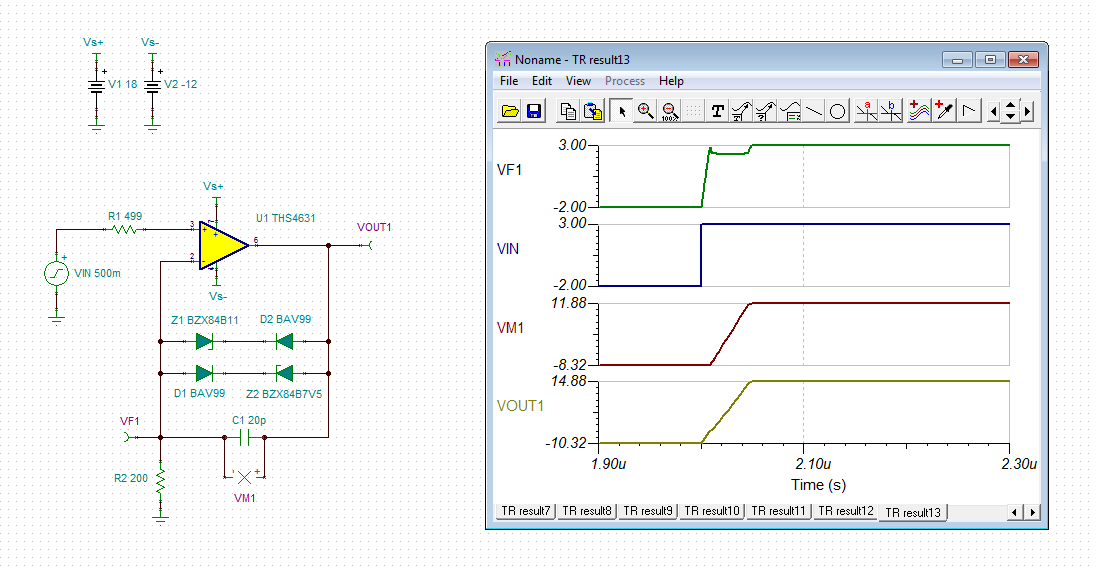Other Parts Discussed in Thread: THS4631
Hi TI expert,
My question is a follow-up of the one in thread e2e.ti.com/.../732403. In that thread, kai klaas69 tells me the reason why the op amp –based integrator has an obvious response delay to its input’s step is due to the op amp’s desaturation.
In my application, I want to produce a voltage in the range of -10V to +15V in the RC load. Then, to solve the saturation issue, can I supply the op amp with -12V and +18V and put two diodes at the op amp’s output node to clamp the output within -10V and +15V? The schematic is as below. I wonder is this method effective? And any other ways to keep op amp off saturation region?(You see, this method isn’t quite convenient, taking the other supplies into account.)
Regards
Yatao


